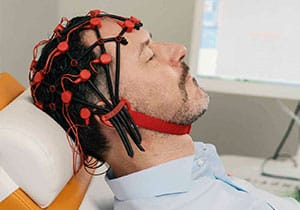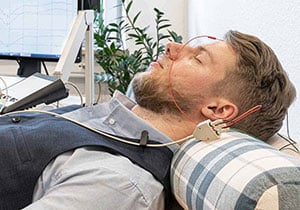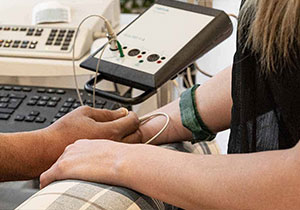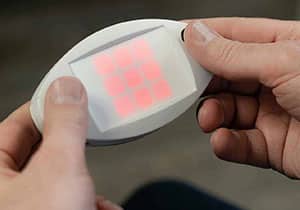
tDCS = Transcranial Direct Current Stimulation
tDCS or transcranial direct current stimulation is a gentle, drug-free therapy method with a lasting effect.
What is tDCS?
tDCS, or transcranial direct current stimulation, is a gentle, drug-free therapy method with a lasting effect. During the treatment, small electrodes are positioned on the scalp through which a weak electrical impulse is sent. This imperceptible treatment step stimulates specific areas of the brain to become active or to reduce overactivity. The altered excitability of the nerve cells can be used to treat specific conditions such as depression or migraines.
The excitability and sensitivity in the corresponding areas can be normalized and improved in the long term. The intensity and duration of the applied current, together with the optimal positioning of the electrodes, determine the success of the treatment. These are defined in the so-called stimulation protocol and continuously optimized during therapy. We select the appropriate protocols based on the latest research results and the latest scientific findings.
We use tDCS for chronic pain and mental illness, e.g. in patients with depression. In addition, tDCS is suitable as a side-effect-free alternative to drug therapy for migraine prophylaxis. In the field of neurology, success can also be achieved in the treatment of epilepsy, Parkinson’s disease, multiple sclerosis, fibromyalgia or spasticity as well as memory and concentration disorders.
The treatment can influence the functioning (excitability) of the brain and can be used to reduce impaired everyday activities and functions after strokes.
Is tDCS treatment covered by statutory health insurance?
This is an individual health service. An additional service that is not covered by statutory health insurance as an “IGeL” or “self-payer service”.




